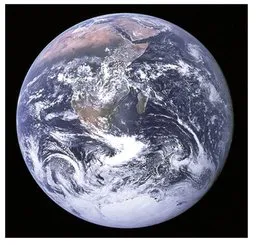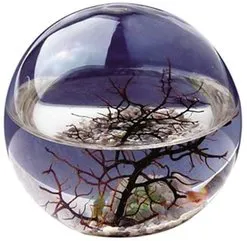
eBook - ePub
Sustainable Process Engineering
Andrzej Benedykt Koltuniewicz
This is a test
Compartir libro
- 411 páginas
- English
- ePUB (apto para móviles)
- Disponible en iOS y Android
eBook - ePub
Sustainable Process Engineering
Andrzej Benedykt Koltuniewicz
Detalles del libro
Vista previa del libro
Índice
Citas
Preguntas frecuentes
¿Cómo cancelo mi suscripción?
¿Cómo descargo los libros?
Por el momento, todos nuestros libros ePub adaptables a dispositivos móviles se pueden descargar a través de la aplicación. La mayor parte de nuestros PDF también se puede descargar y ya estamos trabajando para que el resto también sea descargable. Obtén más información aquí.
¿En qué se diferencian los planes de precios?
Ambos planes te permiten acceder por completo a la biblioteca y a todas las funciones de Perlego. Las únicas diferencias son el precio y el período de suscripción: con el plan anual ahorrarás en torno a un 30 % en comparación con 12 meses de un plan mensual.
¿Qué es Perlego?
Somos un servicio de suscripción de libros de texto en línea que te permite acceder a toda una biblioteca en línea por menos de lo que cuesta un libro al mes. Con más de un millón de libros sobre más de 1000 categorías, ¡tenemos todo lo que necesitas! Obtén más información aquí.
¿Perlego ofrece la función de texto a voz?
Busca el símbolo de lectura en voz alta en tu próximo libro para ver si puedes escucharlo. La herramienta de lectura en voz alta lee el texto en voz alta por ti, resaltando el texto a medida que se lee. Puedes pausarla, acelerarla y ralentizarla. Obtén más información aquí.
¿Es Sustainable Process Engineering un PDF/ePUB en línea?
Sí, puedes acceder a Sustainable Process Engineering de Andrzej Benedykt Koltuniewicz en formato PDF o ePUB, así como a otros libros populares de Physical Sciences y Industrial & Technical Chemistry. Tenemos más de un millón de libros disponibles en nuestro catálogo para que explores.
Información
1 Inevitability of sustainable development
All living beings including humans are formed by their habitat in every respect, i.e. the physical, biological, social etc. Therefore human existence cannot be separated from the whole environment. The biosphere is a system, integrating all living beings with their mutual relations of lithosphere, hydrosphere and atmosphere. As a whole, the system is sometimes referred to as ecosphere. The great numbers of living creatures form the numerous food chains which are interconnected in a web of life. A necessary condition of existence of this network is solar radiation, which is absorbed by our planet in about 30 % of the energy that reaches earth’s surface. Earth’s mass remains almost constant, as do the total number of atoms on Earth, although the chemicals are subject to permanent change. The web of life must permanently adapt to the changes in amount and quality of seasonal and daily solar radiation. But the changes are the stimuli and even the driving force for all natural processes on earth. The network of life always finds a state of dynamic equilibrium.

Fig. 1.1. Earth (courtesy of NASA).
There is only one way to maintain life on planet Earth in the present form (Fig. 1.1). This is simply keeping this homeostasis, by the rational use of natural resources, such as water, air and the content of soil and the earth’s crust. Otherwise, if the uncontrolled exploitation of resources and emissions of various pollutants in the near future were not taken into account, then nobody will be able to prevent an inevitable and uncontrollable chain of events. It would still be possible by using a variety of methods and achievements that are known in the fields of science and engineering. The phenomena of nature always act in accordance with the principles of physics. Process engineering is based on these basic foundations of physics; its main task was always the best industrial production. Process engineering has always focused on the issues of how to produce cheaper, faster, easier, whatever it may be. Now it must answer the question of how to produce more safely and for as long as possible, taking future generations into account.
All citizens of the world should think about future generations, which may not be doomed to extinction. Therefore, those who recognize imbalances in nature must sound the alarm before it is too late. To take appropriate effective remedies for the imbalance caused by human activity in nature, and which are the most visible, painful and spectacular, it is not essential to reduce the rate of development of civilization. Instead, we can use new knowledge which maintains a modern development.
Scientists from NASA managed to create a miniature world which is completely self-contained and requires only solar energy, just like Earth (Fig. 1.2). This is the model of our ecosphere, that is the totally enclosed ecosystem, but extremely simple, as it consists only of algae, bacteria, and shrimps. Algae are food for shrimps, and also produce oxygen through photosynthesis from the sun during the conversion of CO2 and organic substances excreted by the bacteria. On the other hand, bacteria reciprocate these services, by converting all organic substances excreted by the shrimps into the ingredients consumed by algae. In this way, a cycle of matter is closed. It should be noted that the survival of all life forms maintains the environment, which consists of filtered seawater, and marble and coral. The only difference between the model and reality lies in the complexity of the system. The food chains on Earth are numerous, forming the extremely large systems. These systems are also definitely more sensitive to external factors, and therefore the conditions for maintaining them are much more complicated.

Fig. 1.2. Glass model of the ecosphere (courtesy of Ecosphere Associatges Inc.).
From the physical point of view, the biosphere is a semi-closed system. This means that it is a closed system for the flow of materials but open for the flow of solar energy which reaches the earth from outside. But the condition of steady-state is the same, i.e. balancing of material streams, according to the conservation laws of mass or energy. To maintain the world in a stationary condition, the accumulation of any component of mass and energy must be zero. To attain zero accumulation, even for the smallest component, all mass streams in the web of life must circulate, thus must be renewable. Such language of physics justifies the possibility of the continuation of life of the three shrimps of the model as well as us all on Earth. The difference is that there are more people on Earth than shrimps in the ecosphere model. By 2030, it is estimated that the world population will stand at 8 billion [1, 2].
We can only hope that measures built on a solid foundation in many disciplines, and taken by the whole public at the same time, will take effect and possibly reverse unfavorable trends. Therefore, the dissemination of knowledge about the so-called sustainable development is one of those activities which lead to success. I have tried to show how important the role of process engineering in sustainable development is.
1.1 The real determinants of our ecosphere
Our environment is composed of air and water. Our ecosphere consists of three main systems, i.e.: (a) cycles of matter, water, minerals and organic matter, (b) energy flow, (c) the entire web of life, with its individual components. The limited space (see Tab. 1.1) and resources, in addition to the limited ability to maintain homeostasis mean that Earth is very sensitive to the uncontrolled management of raw materials and energy. Further, insufficient capacity to accumulate increasing amounts of pollutants in the ecosphere will certainly lead to irreversible degradation of the earth.
Table 1.1. The dimensions of Earth
| Dimension | Value | Unit |
|---|---|---|
| Diameter at the equator | 12,756.32 | km |
| Diameter through the poles | 12,715.43 | km |
| Total surface area (100%) | 510,072,000 | km2 |
| Surface occupied by water (70.8%) | 361,132,000 | km2 |
| Surface area occupied by land (29.2%) | 148,940,000 | km2 |
| Total volume | 1.083 2 1 × 1012 | km3 |
| Total mass | 5.9736 × 1024 | kg |
The ecosphere spreads from the bottom of the sea up to 10 km into the atmosphere. The total amount of water on Earth is 1.4 billion km3 (see Tab. 1.2), comprising three-quarters of the surface of Earth. It seems that this is a very large amount, but it only makes up 1.26 % of earth’s volume. Furthermore, only a small portion of the volume, about 0.3%, is available for human use. To picture this ratio more easily, imagine that if all the water is evenly distributed over the earth the water level reaches more than 2.6 km but less than 8 m; the layer would be useful for people. So it is only 0.00378 % of the volume of the Earth (sic). What happens in this small part is therefore very important for our future.
Table 1.2. Earth’s water resources.

As it is important to maintain the balance of the flow of material streams, and the narrow region which is associated with the contents of the individual components, the example of oxygen is convincing. The ecosphere maintains 20 % oxygen in the atmosphere, but if it were 25% organic matter on the planet (e.g. forests) would spontaneously ignite. Otherwise, if it were only 15 % the fires could not be sustained. Similar theoretical divagations on the temperature of our globe have been conducted by famous scientists such as Joseph Fourier in 1824 and John Tyndale and Swante Arrhenius in 1858 and 1896, who discovered the greenhouse effect already in the 19th century. They discussed the greenhouse effect as follows: assuming that Earth is a perfect black body (black astral body), defined as having 100 % absorbance o...